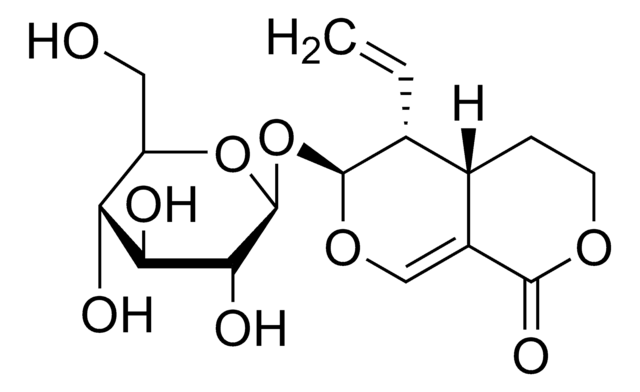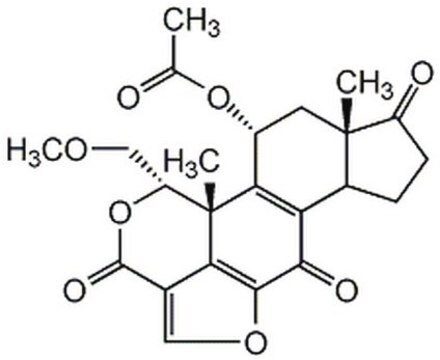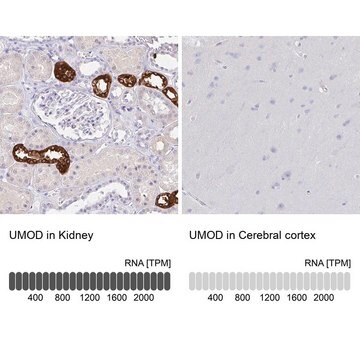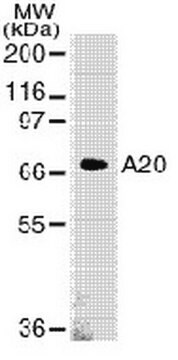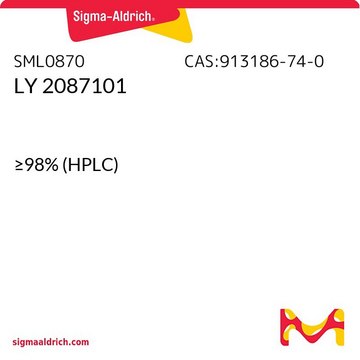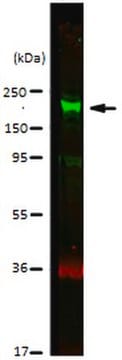MAB5260
Anti-Nerve Growth Factor Antibody, clone 27/21
clone 27/21, Chemicon®, from mouse
Sinónimos:
NGF
About This Item
Productos recomendados
biological source
mouse
Quality Level
antibody form
purified immunoglobulin
antibody product type
primary antibodies
clone
27/21, monoclonal
species reactivity
human, rat, mouse, bovine
manufacturer/tradename
Chemicon®
technique(s)
ELISA: suitable
isotype
IgG1
NCBI accession no.
UniProt accession no.
shipped in
wet ice
target post-translational modification
unmodified
Gene Information
human ... NTF3(4908)
Specificity
The antibody specifically reacts with the beta -subunit of NGF from mouse, in the 2.5S- as well as in the 7S-form.
The cross-reactivity with human NGF is 60-90 % of the reactivity with mouse NGF
Immunogen
Application
Optimal working dilutions must be determined by end user.
Neuroscience
Neurochemistry & Neurotrophins
Physical form
Storage and Stability
Legal Information
Disclaimer
¿No encuentra el producto adecuado?
Pruebe nuestro Herramienta de selección de productos.
signalword
Danger
hcodes
Hazard Classifications
Acute Tox. 3 Dermal - Acute Tox. 4 Inhalation - Acute Tox. 4 Oral - Aquatic Chronic 2
Storage Class
6.1C - Combustible acute toxic Cat.3 / toxic compounds or compounds which causing chronic effects
wgk_germany
WGK 3
Certificados de análisis (COA)
Busque Certificados de análisis (COA) introduciendo el número de lote del producto. Los números de lote se encuentran en la etiqueta del producto después de las palabras «Lot» o «Batch»
¿Ya tiene este producto?
Encuentre la documentación para los productos que ha comprado recientemente en la Biblioteca de documentos.
Nuestro equipo de científicos tiene experiencia en todas las áreas de investigación: Ciencias de la vida, Ciencia de los materiales, Síntesis química, Cromatografía, Analítica y muchas otras.
Póngase en contacto con el Servicio técnico